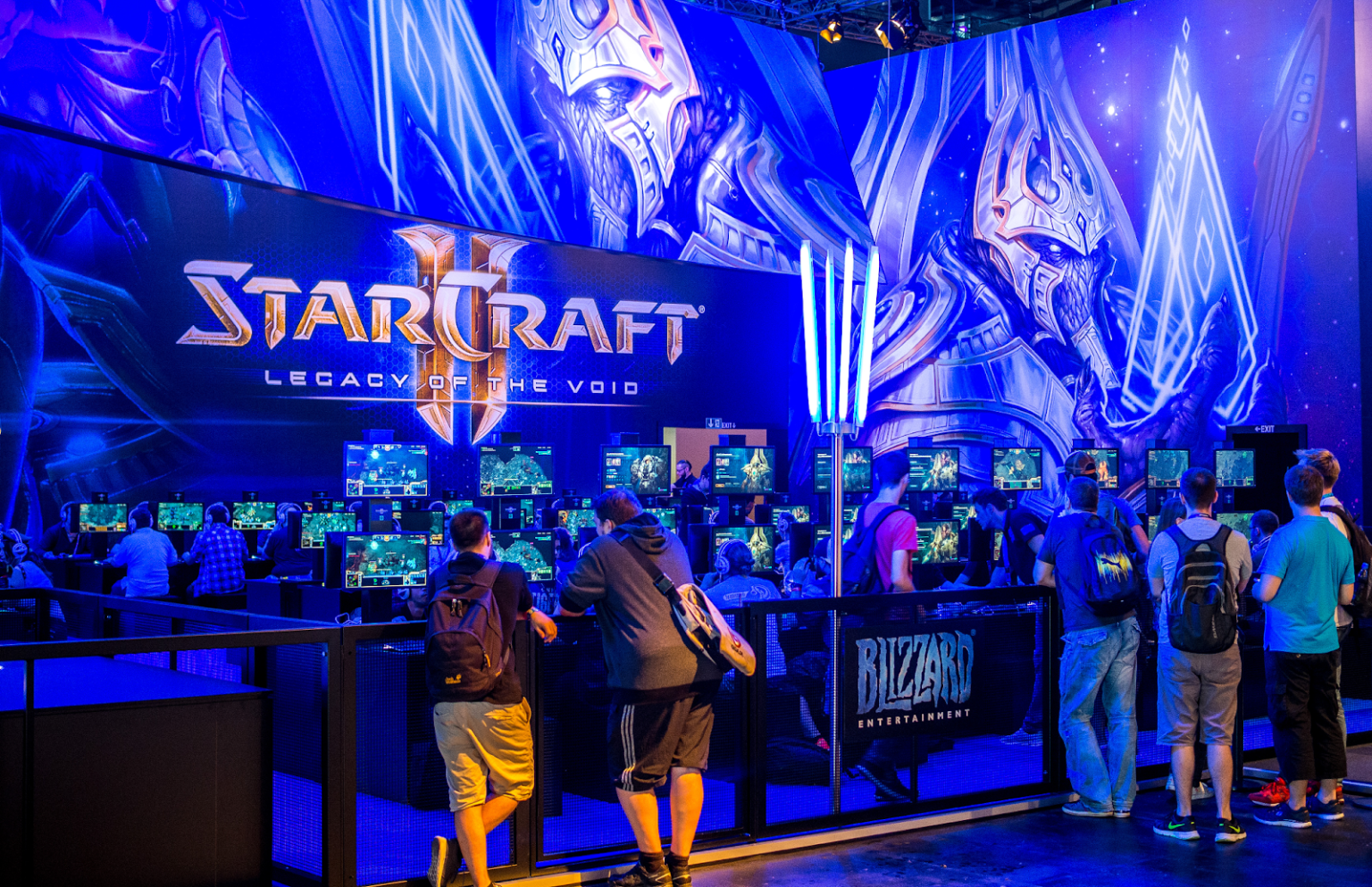Since its emergence in 2010, StarCraft II has become a major favourite of the competitive gaming scene. The StarCraft 2 competitions have helped revolutionize the eSports industry entirely. It is also popular for its strategic depth and complex mechanics, which have helped garner a dedicated following over the past decade. The impact of this game extends beyond the video game itself. It has significantly transformed the competitive gaming scene, and we will explore its impacts below.
The Origins of StarCraft 2
From the beginning, this game was designed to be a competitive one. Blizzard Entertainment did a good number on this one. They created a balanced, immersive game with quick response times, tight mechanics, and intricate design. This game has become a battleground for eSports, where strategy and skill have become the ultimate determinants of success.
The skill, strategy, and mental effort in StarCraft 2 tournaments helped break the misconception that video games are simply recreational. It also brought about the realization that the game matched the practice schedules and mental resilience of traditional sports. The redefinition of the gamer as an athlete was essential in earning respect from broader audiences and traditional media outlets. Hence, it led to;
- Sport agencies.
- Investments from traditional sports franchises.
- A shift in perception that eSports athletes have real-world skills, stamina, and strategy equal to those in traditional sports.
For further advantage, Blizzard designed the Battle.net online service. This supports seamless matchmaking and ranking systems. Also, it is accessible to players of all skill levels. So, whether you are a casual gamer or possess more skills, you can aspire to climb the ranks with no special treatment. The prototype for ranking systems and matchmaking that StartCraft 2 created has become a standard across the competitive gaming scene.
Framework for Competitive Tournaments
Blizzard’s World Championship Series (WCS) birthed structured events hosted by different regions and culminated in grand finals. These tournaments include qualification rounds, playoffs, and the final stages, accessible to newcomers and famous players. This structure encouraged sponsors to invest in tournaments, attracting advertisers and brands to participate in the eSports scene.
As the game’s popularity grew, the tournament prize pool did the same, reaching $100,000. Its prize pool shows that competitive gaming could offer substantial incentives compared to traditional sports. This solidified the game as a viable career path for players interested in going pro.
Creates Star Players
This is a highly skill-based game with a major learning curve. It saw the rise of a new type of athlete, the pro gamer. Players like Sasha “Scarlett” Hostyn, Lee “INnoVation” Shin-hyung, and Jang “MC” Min-chul built a career around this game and became global icons. Their dedication to video games and skills are admired by fans around the globe. Hence, success stories like theirs have been able to help legitimize gaming as a professional pursuit. This laid the foundations for a new generation of pro gamers across titles like League of Legends and Dota 2. In a nutshell, it became a stepping stone for aspiring players across multiple eSports.
Internationalizing eSports
Another major impact of this game is its role in taking eSports to the global landscape. This game’s tournament has attracted players from various countries, from Europe to the United States, South Korea, and beyond. This game helped build a multicultural environment, which has become a speciality of competitive gaming today. Its standardization in tournament rules, player conduct, and broadcasting protocols set a precedent for international eSports events.
Growth of Live-Streaming Platforms
The surge of StarCraft II was coincidental to the growth of live-streaming platforms like Twitch. Its tournaments gained popularity on these streaming platforms and began to adopt standards for live commentary, viewer engagement, and high-quality broadcasting. Fans of the game were among the first to engage with eSports broadcasts, using chat rooms and online forums to discuss strategies, players, and games in real time.
In addition, Blizzard’s collaboration with streaming platforms helped viewers worldwide to access these tournaments at any time. This unprecedented development in the history of competitive gaming has become a blueprint for other games.
The Concept of Meta-Game
This game also introduced a meta-game. This referred to the evolutions of dominant strategies and counterstrategies over time. As players experimented with new tactics, they constantly deviated from the meta. Hence, this required their competitors to adapt or be left behind. This ongoing meta evolution kept the game fresh and exciting for viewers.
In response to this, Blizzard introduced the regular balance patches and expansions. This approach kept the game competitive and fair, and enabled players to keep innovating and refining their strategies. Other competitive gaming titles have also adopted this mode of continuous enhancement.
A Blueprint that Future Titles Follow
StarCraft 2 competitions did not just transform the esports industry. They reshaped the industry and made it worth a billion dollars. Also, it helped to change competitive gaming from a niche hobby to a globally recognized industry. In summary, StarCraft 2 left a memorable mark on eSports by demonstrating that combining strategic depth, skill-based gameplay, and community engagement can lead to industry-wide transformation.


